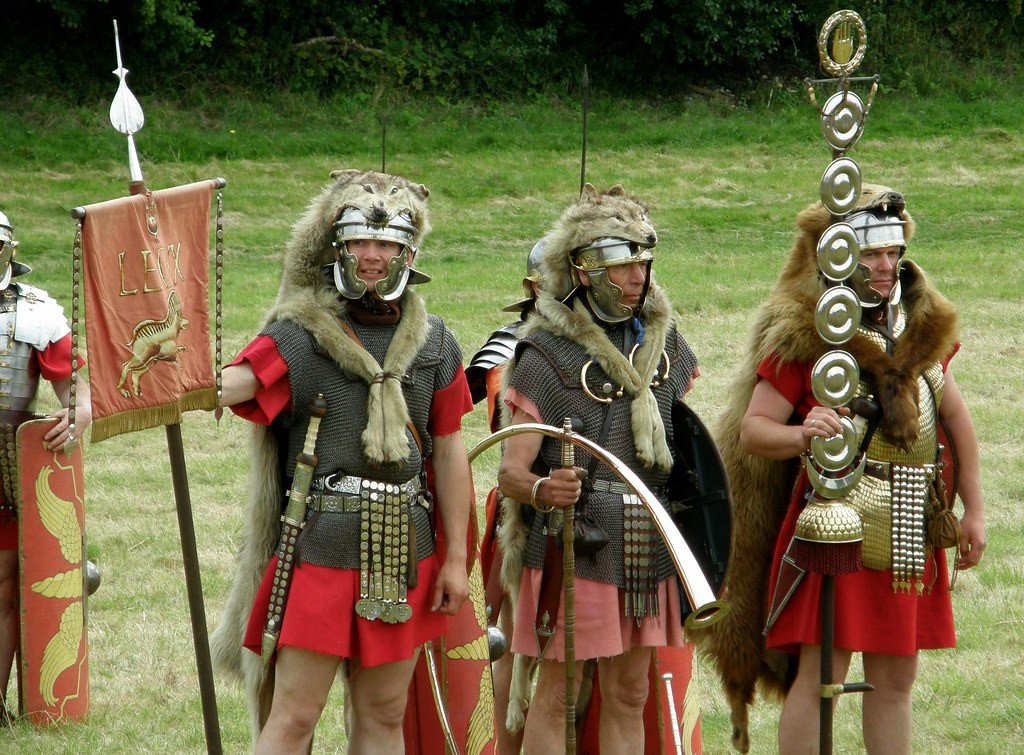Standard Bearers - carriers of the banners of the auxiliary unit
These teacher notes provide information on who the standard bearers were and the different banners they carried. You can download a copy of these teacher notes below.

Soldiers could hold different roles within the Roman Army.
One role a soldier could have was to be a standard bearer. Being the standard bearer of the whole cohort was a position of honour, and only the best would be picked. Standard bearers were paid more money, but they also had other duties. For instance, they acted as bankers, looking after the savings of soldiers kept in the strong-room of the Headquarters.
Standard bearers had the important role of carrying standards (spears with various symbols on them).
These standards were very important to the soldiers. They weren’t just signs for the men to follow into battle or to say which cohort or century they were in, but they were sacred symbols which meant something to the soldiers. If the standard was lost in battle, the entire unit would be in disgrace and serious trouble.
The unit standards were also so important that they were kept in a shrine in the most important building in the fort, the headquarters building, at the very centre of the fort. There was always a soldier on guard at the shrine.
An auxiliary unit such as that based at Segedunum would probably have had 12 standards.
The standard for the whole unit was the vexillum. This was a small square piece of cloth attached to a spear. This standard showed what cohort the soldiers belonged to. This was carried by the vexillarius.
The vexillum standard was accompanied with a standard bearing a three-dimensional portrait bust of the current emperor made from beaten metal called the imago. This was carried by the imaginifer. The Imago gave a physical presence to the Emperor (who was generally far away), and also reminded soldiers of their loyalty to him (as they had to swear an oath of allegiance to him when they joined the Roman army).
The other standards belonged to the sub-units within the cohort.
The six infantry centuries had spear standards, but these were decorated with disks, sometime with other elements mounted on a pole such as a manus (human hand image) instead of the spearhead, and a wreath representing victory. These were carried by a signifer.
Each one was probably slightly different so that the soldiers in the centuries could recognise their own standard and follow it or return to it as necessary.
The four cavalry centuries each had a standard called a draco (which means snake) and consisted of a metal head and a long silk tail that would fill and move in the wind. Some may have had a little device fitted in the mouth to make a whistling sound as well. The Draco was carried by a bearer called the Draconarius.
The standard bearer could not fight as he held the standard in battle and only had a small round shield to protect himself but he relied on his whole unit keeping the standard (and him) safe.
Some standard bearers would also often wear animal skins over their helmets. Different animal skins were worn by different standard bearers. Auxiliary standard bearers wore bears skins whilst praetorian standard bearers (the Emperor’s guard) often worn lion-skins.
The standard bearers were also occupied by a horn-player called a cornicen and a tuba (a long straight-horn) played by a tubicen. The cornicen blew his horn to give soldiers orders when they were marching or during battle especially when verbal commands could often not be heard. The tuba gave the signal to charge or retreat during attack.




